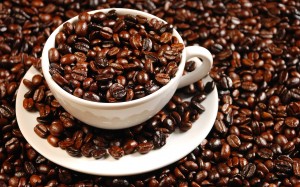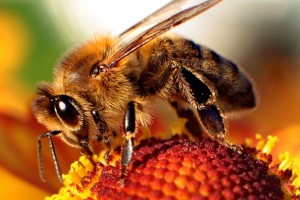People aren’t the only organisms that can’t get going without a daily cuppa. Scientists have engineered a strain of E. coli to thrive on caffeine. To engineer this characteristic in the bacteria, the scientists cloned in genetic material from Psuedomonas putida bacteria. This Psuedomonas species was already known to be able to metabolize caffeine. They also needed to clone in another gene from Janthinobacterium in order for the E. coli to completely metabolize the caffeine. After cloning the genetic material into E. coli, they saw that the bacteria’s growth rate was severely limited by the amount of caffeine in their environment and they could tell how much caffeine was present in a drink by how much of the bacteria grew. The scientists are hoping that the bacteria can be used in decaffeinating waterways near major cities, as the water around population centers usually contains lots of caffeine pollution. If you can get access, check out the paper at ACS Synthetic Biology.
Month: March 2013 (page 1 of 8)

Gut bacteria can effect weight loss
Gut bacteria keep proving how important they are in helping us maintain good health. Studies have shown that exposure to the right gut bacteria can ward off infection from harmful bacteria like C. difficile. Studies have also linked gut bacteria exposure to development of chronic diseases like asthma and Chron’s disease. Yesterday, the New York Times reported on two studies that together link gut microbe exposure to the weight loss.
In one study, people who are overweight were found to be more likely to have a certain microbe named Methanobrevibacter smithii in their gut. The scientists believe this microbe is better at squeezing nutritional value out of foods and makes it harder for people to lose weight:
The study involved 792 people who had their breath analyzed to help diagnose digestive orders. They agreed to let researchers measure the levels of hydrogen and methane; elevated levels indicate the presence of a microbe called Methanobrevibacter smithii. The people with the highest readings on the breath test were more likely to be heavier and have more body fat, and the researchers suspect that the microbes may be at least partly responsible for their obesity.
This type of organism may have been useful thousands of years ago, when people ate more roughage and needed all the help they could get to squeeze every last calorie out of their food. But modern diets are much richer, said an author of the study, Dr. Ruchi Mathur, director of the diabetes outpatient clinic at Cedars-Sinai Medical Center in Los Angeles.
In the other study, scientist examined the effects of gastric bypass surgeries on the microbiota of mice. The scientist gave one group of mice the surgery and saw their microbiome change significantly while they lost weight. They compared this result to mice who had their intestines surgically separated and stitched back together. This group of mice showed little change in their microbial flora. Implanting the fecal matter from the mice who received the gastric bypass into another set of mice caused the new group to lose weight as well:
the researchers used mice, which they had fattened up with a rich diet. One group had gastric bypass operations, and two other groups had “sham” operations in which the animals’ intestines were severed and sewn back together. The point was to find out whether just being cut open, without having the bypass, would have an effect on weight or gut bacteria. One sham group was kept on the rich food, while the other was put on a weight-loss diet.
In the bypass mice, the microbial populations quickly changed, and the mice lost weight. In the sham group, the microbiota did not change much — even in those on the weight-loss diet.
Next, the researchers transferred intestinal contents from each of the groups into other mice, which lacked their own intestinal bacteria. The animals that received material from the bypass mice rapidly lost weight; stool from mice that had the sham operations had no effect.
Exactly how the altered intestinal bacteria might cause weight loss is not yet known, the researchers said. But somehow the microbes seem to rev up metabolism so that the animals burn off more energy.
Check out the human study here at the Journal of Clinical Endocrinology and Metabolism. The study on mice appars here at Science Translational Medicine.
Here at GOLLYGEE! we’ve been following the news on bees and electric fields.
We learned last month that flowers use electric fields to guide bees their way. Bees pick up a positive charge from the static they encounter while flying through the air. Flowers, like most plants, conduct electricity toward the ground and have a negative charge at their surfaces. When bees encounter a flower, the negatively charged pollen is attracted to their positive charge. And when they leave, other bees can tell the flower was just visited because of the reduced electric field.
Yesterday, Ed Yong at Not Exactly Rocket Science reported that bees also use electric fields to facilitate social interaction:
Greggers created Pavlov’s bees. He exposed them to artificial electric fields that mimicking those found in the hive, before giving them a rewarding sip of nectar. Soon, he found that the field alone was enough to make them extend their tongues in anticipation of a tasty treat, just like Pavlov’s dogs salivating at a the sound of a bell.
Greggers found that the bees detect these fields with their flagella—the very tips of their antennae. Picture a bee, dancing away in a tightly packed hive with many neighbours in close proximity. As it waggles, it also vibrates its wings. As the dancer’s positively-charged wing get closer to a neighbour’s positively-charged antenna, it produces a force that physically repels the antenna. As the dancer’s wing swings back to its original position, the neighbour’s antenna bounces back too. With their electric fields, the bees can move each other’s body parts without ever making contact. (Sure, the beating wing also pushes air past a neighbour’s antenna, but Greggers found that the force produced by the incoming electric field is ten times stronger.)
The bee detects these forces with small touch-sensitive fibres in the joints of their antennae, which send electrical signals towards the insect’s brain. If Greggers immobilised the joints by covering the antennal joints with wax, the bees couldn’t learn to associate electric fields with nectar rewards.
These signals from the fibres are intercepted and processed by a structure called Johnston’s organ within the antennae. By recording the activity of neurons in this organ, Greggers showed that it does indeed fire when an electrically charged object—like a Styrofoam ball—is brought close to the flagellum.
Head over to Not Exactly Rocket Science for more. Or read the research paper here.

